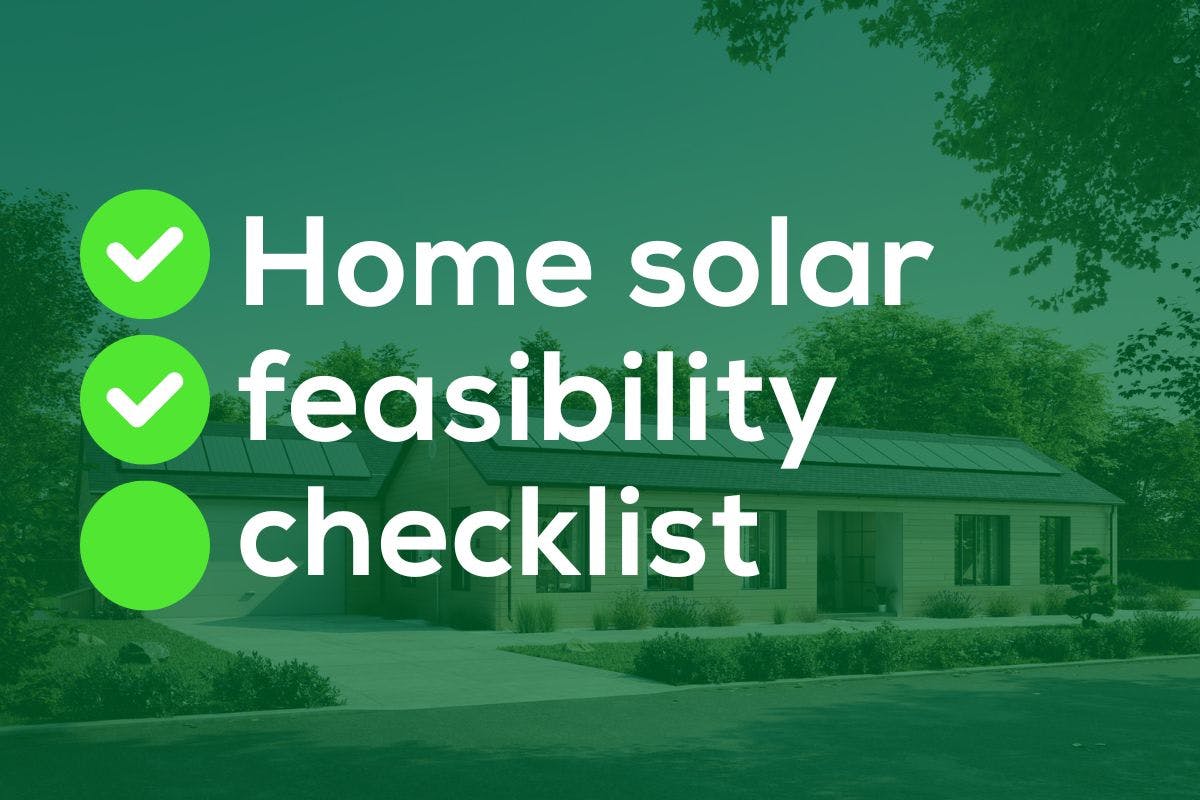If you are looking for a way to save money on your electricity bills, this rooftop solar installation checklist can help you quickly determine whether your home is a viable candidate for renewable energy savings.
At Palmetto, we are committed to helping homeowners understand whether they can save money by going solar and believe that every new project requires a significant amount of individual attention to ensure the best possible results. With that said, there are a few quick ways that you can conduct your own basic solar feasibility study at home before you reach out to a professional.
Looking at the information below, If you check all (or nearly all) of the items listed, then your home may be great for solar energy.
Feel free to print this article and check off the items with a pen if that is your style!
1 ☐ | There is enough space to install your solar panels.
First and foremost, if you want to install solar, you will need somewhere to put it. The amount of roof space needed for solar varies by system size and ultimately depends on the number of panels you plan to install. For instance, if you plan to install 20 panels to match your home’s electricity consumption (fairly average in the US), you would need approximately 300 square feet of usable space on your roof or property that is free of obstructions.
Learn how many solar panels you may need.
2 ☐ | Your roof (or yard) receives direct sunlight most of the day.
Naturally, the key component to determine if solar panels are suitable for your roof involves sunlight, and more specifically how much sunlight your installation space receives each day. Here in the Northern Hemisphere, southern-facing roofs are ideal for solar panels, but both east and west-facing roofs can also receive ample sunlight during peak sun hours. In addition to facing the sun, your panels must also be installed in an area that is free of major shade obstructions such as trees, chimneys, or neighboring buildings.
Dive deeper into the effects of shading on solar panels.
3 ☐ | You plan to pay in cash or qualify for a solar loan or lease.
If you plan to pay in cash for your solar energy system, then by all means, cash is king, and an outright purchase is a great way to buy solar. However, if you are one of the vast majority of solar buyers who would prefer not to pay for 25 years of electricity production in one transaction, then you will need to qualify for either a loan or another type of solar agreement. While there are several pros and cons for all solar financing arrangements, you may need to pass a credit or background check before installing panels with a loan or lease.
Explore the differences between buying or leasing solar panels.
4 ☐ | Your electric utility supports net metering or net billing.
Unless you are tucked away far off-grid, you will likely be installing a grid-tied solar energy system on your home. What some first-time solar buyers don't know is that when rooftop panels generate power, the utility will transmit any excess energy you don’t use at home and share it with your neighbors when possible.
Within a net energy metering agreement, the utility company will compensate you for this excess power shared in the form of an electricity bill credit. Therefore, if your electric utility provides net energy metering (which is available in over 40 US states and territories), you will be more likely to save money with home solar through utility bill savings.
Read our guide to net metering for home solar.
5 ☐ | You can save a lot with the federal tax credit.
The Residential Clean Energy Credit can help you reduce your overall investment in a solar energy system by up to 30% of the total project costs. However, it is important to note that the Clean Energy Credit is redeemed as a federal income tax credit, and not as a rebate. Therefore, the Residential Clean Energy Credit is only of value to those who possess a federal tax liability, and while qualifying for the credit isn’t absolutely necessary to go solar, it certainly does help financially.
Learn everything you need to know about the solar tax credit.
6 ☐ | You are projected to lower your energy costs.
Zooming in on the main problem that solar energy solves (beyond offsetting local carbon emissions), homeowners primarily install solar panels to save on electric bills. With an online tool like Palmetto's Solar Profile or the assistance of a solar professional, you can estimate your future energy savings based on your projected solar generation and utility expenses avoided.
See how much you can save instantly with a free estimate from Palmetto.
7 ☐ | Your roof is relatively new or ready for replacement.
Although this checklist item is not 100% necessary, having a relatively new or very old roof may make now the perfect time for you to go solar. As both solar panels and residential roofs have long expected lifetimes (25 years or more), most experts agree that syncing the two projects together can make a roof replacement the best time to go solar.
If not, you can have your solar panels removed and reinstalled when reroofing later.
8 ☐ | You trust your solar advisor.
Last but certainly not least, we believe that the number one thing you need before you go solar is to trust the person who is handling your installation. Solar energy is a multi-decade commitment. Therefore, you should strive to find a company with a reputation for excellent services and a high likelihood to remain in business throughout the long operating lifetime of your renewable energy system.
Review the 20 questions to ask your solar installer
Go solar with a name you can trust! Palmetto is here to help.

